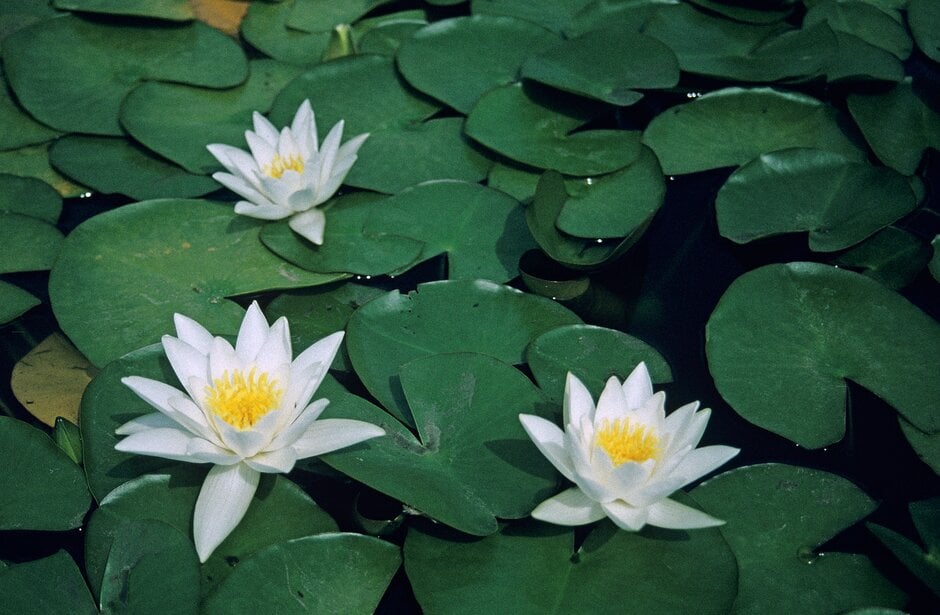Size
Ultimate height
Time to ultimate height
2–5 yearsUltimate spread
0.5–1 metresGrowing conditions
Moisture
Poorly–drainedpH
Acid, Alkaline, NeutralColour & scent
| Stem | Flower | Foliage | Fruit | |
| Spring | Green | |||
|---|---|---|---|---|
| Summer | White Yellow | Green | ||
| Autumn | Green | |||
| Winter |
Position
- Full sun
Aspect
South–facing or West–facing
Exposure
Exposed or Sheltered Hardiness
H5Botanical details
- Family
- Nymphaeaceae
- Native to GB / Ireland
- No
- Foliage
- Deciduous
- Habit
- Submerged, Floating
- Genus
Nymphaea are rhizomatous, submerged aquatic perennials with floating, rounded leaves and showy, sometimes fragrant, cup- or bowl-shaped flowers in a wide range of colours, held on or above the water and followed by submerged, berry-like fruits
- Name status
Accepted
- Horticultural Group
- Hardy Nymphaea are aquatic perennials with rounded floating leaves and showy flowers on or just above the water, with numerous narrow petals and conspicuous stamens, in white and shades of yellow, pink and red
How to grow
Cultivation
Grow in undisturbed water in full sun. Plant in baskets in loamy soil with crowns just below soil surface and covered with pea shingle. Position the basket so it is covered by 15-25cm of water and as the plants establish, lower the basket to twice the initial depth. Feed plants throughout the growing season; see waterlily cultivation for further information
Propagation
Propagate by division of rhizomes or offsets in summer, place pots in shallow water until established
Suggested planting locations and garden types
- Wildlife gardens
- Low Maintenance
Pruning
Deadhead and remove yellow leaves regularly
Pests
May be susceptible to waterlily beetle, waterlily aphid, brown china-mark moth and leaf-mining midge
Diseases
May be susceptible to crown rot, brown spot and waterlily leaf spot
Get involved
The Royal Horticultural Society is the UK’s leading gardening charity. We aim to enrich everyone’s life through plants, and make the UK a greener and more beautiful place.
